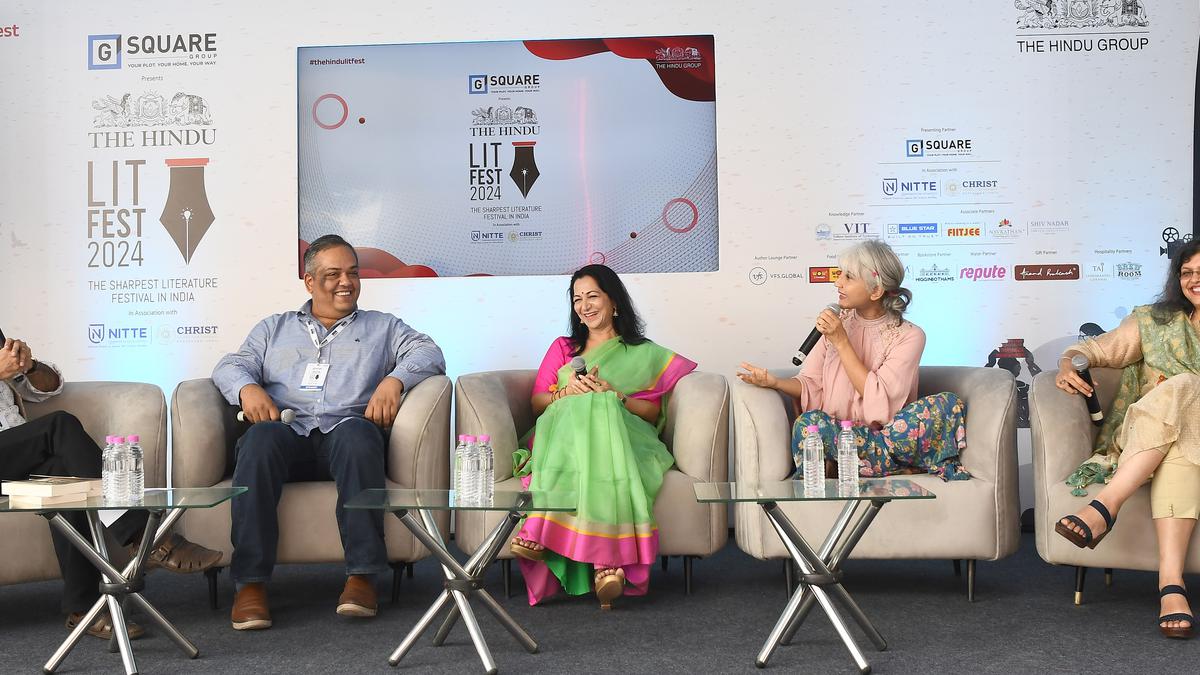
The Hindu Lit for Life | A crime wave: Detecting what makes mystery writers tick
The Hindu
Crime fiction is at its best when it moves beyond ‘whodunits’ to ‘whydunits’ and ‘howdunits’, says Anuja Chauhan; Harini Nagendra shares how her own family history inspired the feminism in her stories
How popular is crime fiction as a genre? What goes on in the world of crime and in the minds of writers as they belt out murder mysteries? These, and multiple other mysteries were debated at The Hindu Lit for Life session, ‘A Crime Wave’, in a conversation with authors Anuja Chauhan, Harini Nagendra, Kiran Manral, and Tarun Mehrishi, moderated by The Hindu sports editor K.C. Vijayakumar.
Discussing the often inevitable book-to-movie nexus, Ms. Chauhan explained how writers could not afford to ignore the call of Bollywood or the wider film world when it comes. “If you are looking to make decent money writing, you cannot turn down people who want to convert your book into a screenplay. When I read a good book, I feel like it’s the author’s vision, which my imagination takes forward. In a good way, though, the book will become a screenplay which is the director’s vision,” she said.
Much of her joy in writing, she said, lay in getting into people’s heads, the beef, and the politicking. “Nothing happens in a vacuum. Crime doesn’t happen in isolation. I enjoy writing ‘romcrom’ — romance, crime, and comedy. Everything happens in a busy, buzzing ecosystem, so you can’t pull it out and leave the other threads out. Murder mysteries aren’t merely ‘whodunits’ but ‘whydunits’ and ‘howdunits’. The motive and character are important. What we love is the psychological tropes and the slippery slopes that accompany such mysteries,” she added.
Read our live updates of The Hindu Lit Fest 2024, Day 2
The authors also discussed what made them fall in love with crime fiction. Ms. Nagendra spoke of historical crime fiction and how she grew up loving golden-age fiction such as Agatha Christie’s mysteries. “What I enjoy about historical crime fiction is the flourishing of writers today. Historical crime is something we can relate to. There is the horror end of the spectrum, or lighthearted stuff that I write about. While I was growing up, there was Feluda and a few others, at best, but not much diversity. Today, though, there is more variety on the bookshelf,” she said.
She also explained how, in her book, she has largely dealt with Bengaluru, and a strong sense of nostalgia for the city plays a role. “It is therapy. The 1920s was a time when women were asking to sit in the representative assemblies, stepping out of homes, and so on. We always think of Bengaluru being a cosmopolitan city, but for me, it is an accepting one. I love the 1920s as, at a time when lines were being drawn rigidly, there was something about this city that made people come from any part of the world and make it their home,” she added.
What makes authors zero-in on the specifics of what they write about? For Ms. Nagendra, the reason why she wrote a lot on feminist issues, for instance, was because it was personal; there were women in her family who were denied the opportunities to read and write. “My grandmother wanted to read and write, but was married off at 12. My mother and mother-in-law’s greatest regret was they got into medical colleges but they couldn’t study. Their regret that they couldn’t do anything stays on in my life, and maybe, that’s why I made sure my character, Kaveri, could do whatever she wanted,” she explained.











